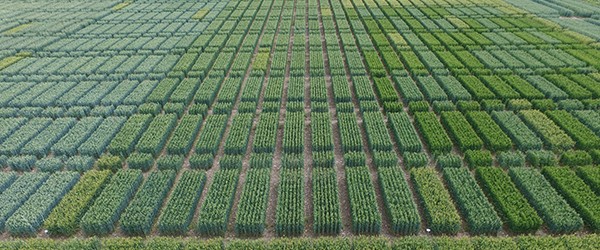Have you ever stopped to wonder why the world around us is painted in vibrant shades of green, especially during spring and summer? Leaves, the powerhouses of plants, are predominantly green, but what’s the science behind this ubiquitous color? The answer lies in a fascinating process called photosynthesis and a remarkable pigment known as chlorophyll.
To understand why leaves are green, we need to delve into the world of light, energy, and the intricate mechanisms plants use to sustain life. Plants, like all living organisms, require energy to grow and thrive. They don’t get their energy by eating food like humans do; instead, they are nature’s solar panels, harnessing the power of sunlight to produce their own food through photosynthesis.
This process primarily occurs in the leaves, which are essentially food factories for plants. Within these leaves, tiny structures called chloroplasts house a green pigment called chlorophyll. Chlorophyll is the key player in capturing sunlight, but it doesn’t absorb all colors of light equally.
Sunlight, or visible light, is composed of a spectrum of colors, just like a rainbow – red, orange, yellow, green, blue, indigo, and violet. Each color represents a different wavelength of light, and these wavelengths carry varying amounts of energy. Chlorophyll is exceptionally good at absorbing red and blue light, the wavelengths most effective for photosynthesis.
But what about green light? This is where the “green mystery” is solved. Chlorophyll doesn’t efficiently absorb green light. Instead, it reflects it. When sunlight strikes a leaf, the chlorophyll molecules absorb the red and blue portions of the spectrum, utilizing their energy for photosynthesis. The green light, being less useful for this process, is bounced back or reflected away from the leaf. This reflected green light is what our eyes perceive, making leaves appear green to us.
Think of it like wearing colored clothing. A red shirt appears red because the dye in the fabric absorbs most colors of light except red, which it reflects. Similarly, leaves appear green because chlorophyll reflects green light while absorbing other colors more effectively.
To further understand this, let’s consider the electromagnetic spectrum, of which visible light is just a small part. Light travels in waves, and the distance between the peaks of these waves is called the wavelength. Visible light ranges from shorter wavelengths (like violet, around 380 nanometers) to longer wavelengths (like red, around 730 nanometers). Shorter wavelengths carry more energy than longer wavelengths.
Plants strategically absorb the higher energy wavelengths (blue) and the longer, but still energy-rich wavelengths (red) because chlorophyll’s molecular structure is optimized to capture energy from these parts of the spectrum. Green light, falling in the middle of the visible spectrum, is less efficiently absorbed.
Photosynthesis itself is a remarkable two-stage process. The first stage, known as the “light-dependent reactions,” directly uses the light energy captured by chlorophyll. This occurs in specialized compartments within plant cells called chloroplasts, specifically within disc-like structures called thylakoids. Thylakoids are packed with chlorophyll, and at the heart of photosystems within these thylakoids are “special pairs” of chlorophyll molecules. These special pairs are where the magic happens – they become energized when they absorb light. The rest of the chlorophyll molecules in the chloroplast act like antennas, funneling light energy towards these special pairs.
The energy captured in the light-dependent reactions is then used in the second stage, the “light-independent reactions” (also known as the Calvin cycle). These reactions take place in the stroma, the fluid-filled space within the chloroplasts surrounding the thylakoids. In this stage, carbon dioxide from the atmosphere, which enters the leaf through tiny pores, is combined with water to produce sugars. These sugars are the plant’s food, providing it with the energy and building blocks it needs to grow. Oxygen is released as a byproduct of photosynthesis, which is crucial for the air we breathe.
So, in essence, leaves are green not because green light is beneficial for photosynthesis, but rather because chlorophyll is most efficient at absorbing red and blue light, reflecting the leftover green light back to our eyes. This seemingly simple phenomenon is fundamental to life on Earth, as photosynthesis not only provides plants with energy but also forms the base of most food chains and produces the oxygen that sustains animal life.
The efficiency of light absorption in plants is a topic of ongoing research, with scientists constantly exploring ways to improve crop yields and understand the intricacies of photosynthesis. For example, the development of speed breeding technology, inspired by NASA’s space crop production methods, utilizes enhanced LED lighting, particularly in the red and blue spectrum, to optimize plant growth and accelerate breeding cycles. This technology highlights the importance of understanding how plants use different wavelengths of light, building directly on the fundamental question: Why Are Leaves Green? The seemingly simple color of leaves reveals a complex and vital scientific story about light, energy, and life itself.
